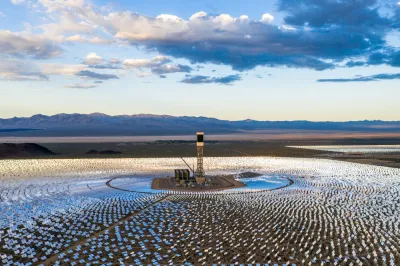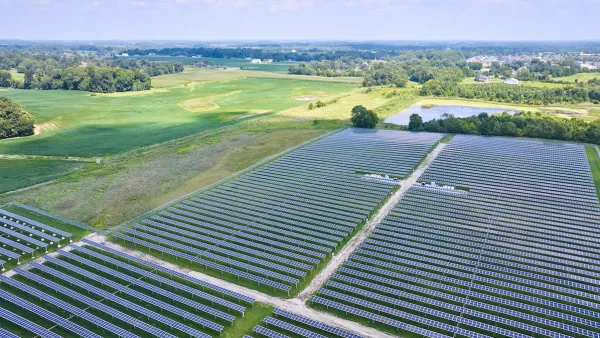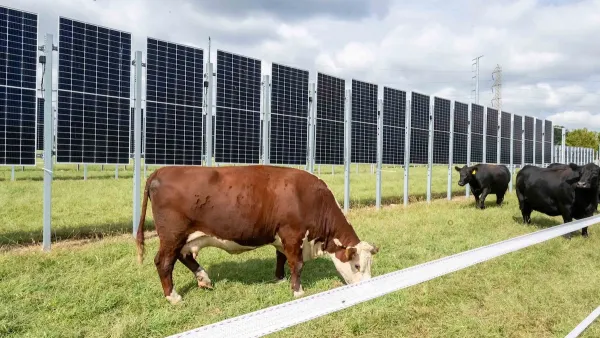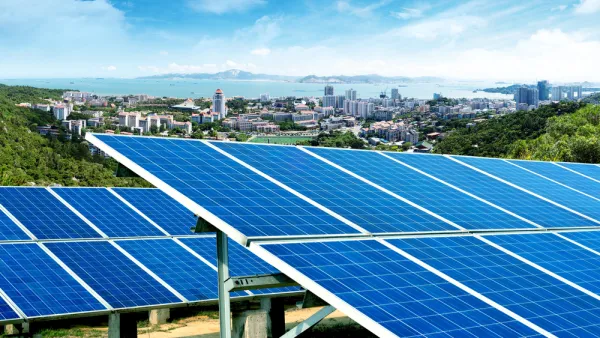The sprawling Mojave Desert plays a key role in carbon sequestration, storing around 10 percent of California’s carbon. But the fragile ecosystem is threatened by large-scale renewable energy projects.

A StoryMap from the Mojave Desert Land Trust outlines the role of the Southwestern desert in fighting climate change, highlighting the conflict between desert conservation and the rise of large-scale solar power generation projects. According to the MDLT, “Around 10% of the state’s carbon is sequestered underground in the desert’s plants and soil. But that carbon storage capacity is under threat from an unlikely source: large-scale renewable energy projects.”
“Arid soils provide the third largest global pool of carbon storage potential. In California, the desert accounts for nearly 10% of the state’s carbon sequestration.” But large-scale solar projects are often “poorly sited in pristine functioning ecosystems,” which can reduce the desert’s capacity to serve as an effective carbon sink.
According to MDLT, “To protect the desert’s fragile resources, we need to focus on leveraging renewable energy options with the least impact on functioning ecosystems.” To this end, “Several innovative technologies capable of assisting in our transition to clean energy, including rooftop and community solar, should be leveraged.” The article encourages boosting community and rooftop solar installations that utilize already developed land to create more solar energy production. “Recent studies have shown that rooftops across the United States offer enough acreage to generate the entire electrical demand of the country and more. One study found that installing 1 GW of rooftop solar would potentially avoid the disturbance of almost 5,200 acres of land – an area around the size of Monterey.”
See the linked StoryMap for more statistics and a visualization of California’s “development focus areas,” previously disturbed land recommended for renewable projects.
FULL STORY: How the desert will help us tackle climate change

National Parks Layoffs Will Cause Communities to Lose Billions
Thousands of essential park workers were laid off this week, just before the busy spring break season.

Retro-silient?: America’s First “Eco-burb,” The Woodlands Turns 50
A master-planned community north of Houston offers lessons on green infrastructure and resilient design, but falls short of its founder’s lofty affordability and walkability goals.

Delivering for America Plan Will Downgrade Mail Service in at Least 49.5 Percent of Zip Codes
Republican and Democrat lawmakers criticize the plan for its disproportionate negative impact on rural communities.

Test News Post 1
This is a summary

Test News Headline 46
Test for the image on the front page.

Balancing Bombs and Butterflies: How the National Guard Protects a Rare Species
The National Guard at Fort Indiantown Gap uses GIS technology and land management strategies to balance military training with conservation efforts, ensuring the survival of the rare eastern regal fritillary butterfly.
Urban Design for Planners 1: Software Tools
This six-course series explores essential urban design concepts using open source software and equips planners with the tools they need to participate fully in the urban design process.
Planning for Universal Design
Learn the tools for implementing Universal Design in planning regulations.
EMC Planning Group, Inc.
Planetizen
Planetizen
Mpact (formerly Rail~Volution)
Great Falls Development Authority, Inc.
HUDs Office of Policy Development and Research
NYU Wagner Graduate School of Public Service





























